Tesla Inc. is clearing hurdles in the China auto market during the Coronavirus pandemic. The company had 12,709 vehicle registrations in China in March, versus 2,314 in February, marking its highest-ever monthly sales in the world’s largest auto market, according to data from LMC Automotive. Overall new passenger car sales in March were down 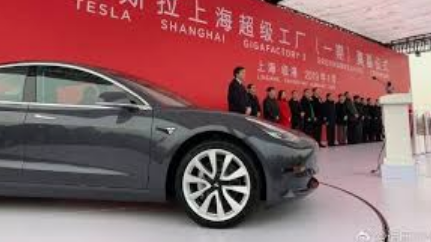 40.8 percent from a year earlier in that market. On Friday, the company said it has started selling two more Model 3 variants built at its Shanghai plant. That means all the Model 3s sold in China are locally made and free of import tax.
40.8 percent from a year earlier in that market. On Friday, the company said it has started selling two more Model 3 variants built at its Shanghai plant. That means all the Model 3s sold in China are locally made and free of import tax.
Tesla plans to start delivering Long Range Model 3s starting in June, priced at 339,050 yuan after subsidies. The rear-wheel drive version, with a driving range of about 373 miles before needing to be recharged, will be priced at 439,900 yuan. The locally made Performance Model 3, for which deliveries are scheduled to begin in Q1 2021, will be priced 419,800 yuan, the California-based automaker said without specifying the price after subsidies.
Telling Your Story: Doing the math on buying your EV
Editor: So we have our first response to my request on sharing your stories on how you got absorbed into the topics of clean transportation, electric vehicles, alternative fuels, renewable energy, and the like. Thanks to Emile Rocher, a professional in efficient and sustainable buildings — and also an electric vehicle owner — for sharing her experiences with a Ford Focus electric and a Mitsubishi Outlander plug-in hybrid. For those of you interested in sharing your thoughts on sustainable transportation, you can send your comments to jlesage378@gmail.com; or you can leave it in the Comment box at the end of the newsletter.
After spending some 40 years building efficient buildings, when affordable grid tied PV came along some 7 years ago, we invested about $10,000 (Canadian dollars) in system equipment and installed it on a long weekend with the help of a couple friends. Ended up with a surplus of capacity becoming a net exporter which is contrary to the rules in oily Alberta, and were being paid half of retail cost in any case, which inspired us to purchase our first EV — a 2 year old deeply discounted Ford Focus with no km (range). Added another 1.5 KW to the system a few years ago and still had a surplus even while driving about 10,000 km/yr. So we parked our ancient oil burning Jetta and bought a plug-in Mitsubishi Outlander. The great AWD rig which will get 7 L/100 km (33.6 mpg) after the 50 km battery range is exceeded. Collectively these investments make the equity markets pale in comparison regarding risk and return. Our total electricity bill for one full year was $185 (Canadian dollars), electric driving included.
What really needs to be driven home in this oil vs renewable debate is economics. Oil for personal transportation at this time, disregarding the global risk of climate change, just can’t compete evenly with the multiple massive subsidies that industry enjoys. Even Exxon and Shell are buying solar electricity (2 cents/kw hr recently for Exxon) and using it as one of the many other energy inputs in producing liquid fuel.
Do the math — starting with the 30 miles in which a first-gen EV can travel on 7 KW hr of electricity. Remember that the oil industry used that much electricity in the refining process alone to produce one gallon of gasoline (source: Nissan). This business model makes as much sense as turning gold into lead at a huge cost. We need a comprehensive study on all the other collective inputs that go into turning the various sources of hydrocarbons into liquid fuel, and to publicize it as aggressively as the fossil industry lobbies politicians to keep the oil flowing.
—Emile Rocher
And in other news………..
Responding to Covid19: BYD Motors will pledge a donation of $1 million in medical supplies, including personal protective equipment (PPEs) and hand sanitizer to transit agencies and first responders in the US and Canada. The supplies include FDA-approved adult surgical masks and KN-95 respiratory protective devices, as well as hand sanitizer that is 99.999 percent effective. Several thousand PPEs have already been delivered to agencies that include the City of Los Angeles, the Valley Medical Center in San Jose, Calif., the Toronto Transit Commission, and the LA County Sheriff’s Department………… Hyundai Motor America has donated $100,000 and 10,000 coronavirus test kits to support drive-up testing in Detroit, part of a larger effort by the company to support 21 US drive-up sites. About 65,000 tests have also been donated to hard-hit areas like New Orleans, Chicago, and Detroit, the company said.
Supporting solar in USAF: Pvilion, a leading solar powered fabric provider, announced it has been awarded a Phase II Small Business Innovation Research (SBIR) contract by the United State Air Force (USAF) to continue its development of rapidly deployable, solar powered structures. SBIR enables small businesses to explore their technological potential and provides the incentive to profit from its commercialization. The USAF has favorably evaluated the products Pvilion presented for cost, complexity, sustainability, required manual labor, as well as for energy independence all with the goal of maximizing mission-objective readiness. The company says that its solar technology is significantly lighter and more adaptable than traditional solar options. It is integrated entirely into a system already being installed, such as for a tent, shade canopy, or hangar. With fully integrated photovoltaic fabric panels, Pvilion’s structures allow for the multi-capability use by providing power, shelter, lighting, and climate control. Pvilion’s commercial customers use its solar fabric technology in structures used for events such as music festivals, in temporary industrial worksites, and in structures found in parks, municipalities, universities, and corporate campuses. Military operations are a good fit, too. “We’re now working hard to quickly delivery solar structures to Airmen who need them most. In this challenging time, instant access shelter, power, and climate control is key. This project is very important to Pvilion and, I believe, the nation as whole,” said Colin Touhey, engineer and Pvilion CEO.
Fuel cells for marine vessels: ABB has signed a Memorandum of Understanding (MOU) with Hydrogène de France to jointly manufacture megawatt-scale fuel cell systems capable of powering ocean-going vessels. The agreement will establish a close collaboration on the assembly and production of the fuel cell power plant for marine applications. Building on an existing collaboration announced in 2018 with Ballard Power Systems, ABB and HDF intend to optimize fuel cell manufacturing capabilities to produce a megawatt-scale power plant for marine vessels. The new system will be based on the megawatt-scale fuel cell power plant jointly developed by ABB and Ballard, and will be manufactured at HDF’s new facility in Bordeaux, France.
DC charging for Kia Niro: Electrify America has made an agreement with Kia Motors America to offer ‘Kia Select,’ a new charging program with optimized pricing for the Kia Niro electric vehicle (EV) model on Electrify America’s direct current (DC) fast charging network. The program offers a flat rate of 35 cents per-minute charging for current Kia Niro EV drivers, designed specifically for the unique DC charging characteristics of the model. The program also waives session fees and has no subscription fees for participants. To participate in the program, drivers can simply download the Electrify America charging app and complete a brief enrollment process. Drivers can also use the app to locate Electrify America charging stations, start a charging session, and remit payment using their credit or debit card entered during the registration process.

 the unforeseen future. It will take quite a while until the public can rest assured that healthcare professionals can stop the spread and bring a cure — or at least arrest worsening of symptoms — for those infected with the contagious respiratory disease. It’s been causing panic among those crowding supermarkets to purchase bottled water, toilet paper, sanitary wipes, and in the past few days, nutritional basics such as canned soup, pasta, and bread. Governments around the world are placing severe restrictions on travel and public gatherings in attempts to quell panic and spreading of the infection and disease.
the unforeseen future. It will take quite a while until the public can rest assured that healthcare professionals can stop the spread and bring a cure — or at least arrest worsening of symptoms — for those infected with the contagious respiratory disease. It’s been causing panic among those crowding supermarkets to purchase bottled water, toilet paper, sanitary wipes, and in the past few days, nutritional basics such as canned soup, pasta, and bread. Governments around the world are placing severe restrictions on travel and public gatherings in attempts to quell panic and spreading of the infection and disease. rides provided by Uber, Lyft, Via, Curb, and other firms, are usually taking away even more low fuel consumption and displacing mobility such as public transportation, biking, or walking. UCS recommends that these companies take efforts to electrify their fleets and increase their pooled rides. “For ride-hailing to contribute to better climate and congestion outcomes, trips must be pooled and electric, displace single-occupancy car trips more often, and encourage low-emissions modes such as mass transit, biking, and walking,” the report says.
rides provided by Uber, Lyft, Via, Curb, and other firms, are usually taking away even more low fuel consumption and displacing mobility such as public transportation, biking, or walking. UCS recommends that these companies take efforts to electrify their fleets and increase their pooled rides. “For ride-hailing to contribute to better climate and congestion outcomes, trips must be pooled and electric, displace single-occupancy car trips more often, and encourage low-emissions modes such as mass transit, biking, and walking,” the report says.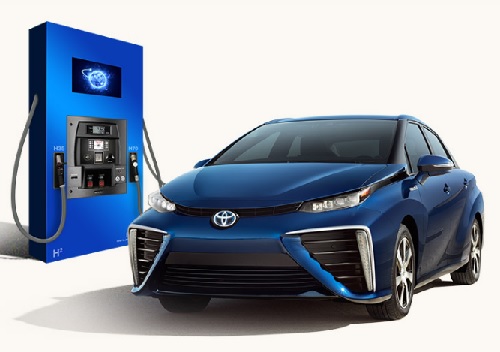 Co., that concludes there are now three core market drivers: a steep drop in production costs, higher load utilization cutting distribution and refueling costs, and additional cost drops from scaling up of end-use equipment manufacturing. The study looked at 25,000 data points gathered and analyzed from 30 global companies with cost reductions expected across several different hydrogen applications. These sectors include long-distance and heavy-duty transportation, industrial heating, heavy industry feedstock, and others, which make up about 15 percent of global energy consumption. Of course, much support is needed and Hydrogen Council is championing effective government policies to be adopted in key geographies, along with investment support of around $70 billion in the lead up to 2030 in order to scale up and produce for a much more cost-competitive fuel. “The Hydrogen Council believes that the report’s findings will not only increase public awareness about the potential of hydrogen to power everyday lives, but also debunk the myth that a hydrogen economy is unattainable due to cost,” said Euisun Chung, executive vice chairman of Hyundai Motor Group and co-chair of the Hydrogen Council. “If we are to reach our global climate goals by mid-century and reap the benefits of hydrogen, now is the time to act.”
Co., that concludes there are now three core market drivers: a steep drop in production costs, higher load utilization cutting distribution and refueling costs, and additional cost drops from scaling up of end-use equipment manufacturing. The study looked at 25,000 data points gathered and analyzed from 30 global companies with cost reductions expected across several different hydrogen applications. These sectors include long-distance and heavy-duty transportation, industrial heating, heavy industry feedstock, and others, which make up about 15 percent of global energy consumption. Of course, much support is needed and Hydrogen Council is championing effective government policies to be adopted in key geographies, along with investment support of around $70 billion in the lead up to 2030 in order to scale up and produce for a much more cost-competitive fuel. “The Hydrogen Council believes that the report’s findings will not only increase public awareness about the potential of hydrogen to power everyday lives, but also debunk the myth that a hydrogen economy is unattainable due to cost,” said Euisun Chung, executive vice chairman of Hyundai Motor Group and co-chair of the Hydrogen Council. “If we are to reach our global climate goals by mid-century and reap the benefits of hydrogen, now is the time to act.”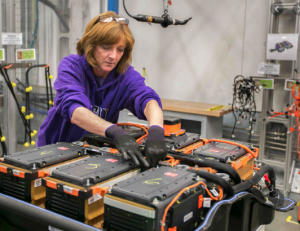
 ng backer of the UN’s Paris agreement on climate change, and the most impressive nation in the world for per capita electric vehicle sales; along with generous government incentives for EV purchases and charging infrastructure.
ng backer of the UN’s Paris agreement on climate change, and the most impressive nation in the world for per capita electric vehicle sales; along with generous government incentives for EV purchases and charging infrastructure. will have two different battery sizes, with one of them having the capacity to go up to 300 miles per charge. Buyers can also choose from rear-wheel drive, all-wheel drive, and different power outputs. Ford thinks the Mach-E will make a big splash, its first ever all-out competition against Tesla and the majors, tapping into the performance history and style of the Mustang. EVs are expected to play the leading role at this year’s LA Auto Show product launches, with the Audi E-Tron Sportback and, post-show, Tesla’s Cybertruck. Overall, new SUVs/crossovers will be the leading vehicle classification on display.
will have two different battery sizes, with one of them having the capacity to go up to 300 miles per charge. Buyers can also choose from rear-wheel drive, all-wheel drive, and different power outputs. Ford thinks the Mach-E will make a big splash, its first ever all-out competition against Tesla and the majors, tapping into the performance history and style of the Mustang. EVs are expected to play the leading role at this year’s LA Auto Show product launches, with the Audi E-Tron Sportback and, post-show, Tesla’s Cybertruck. Overall, new SUVs/crossovers will be the leading vehicle classification on display.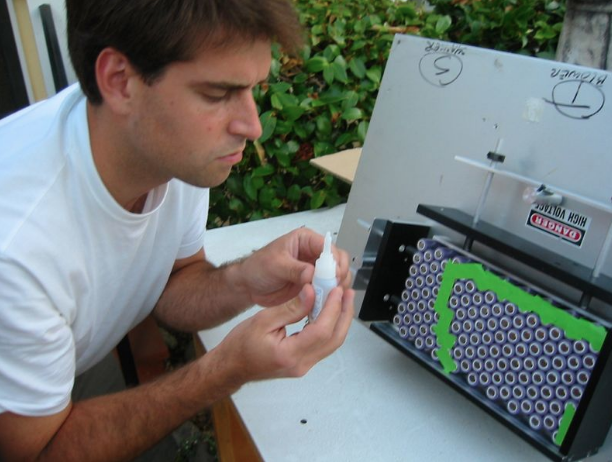 quarter. Straubel is credited with playing a pivotal role in the development of Tesla’s power systems and battery technology. The photo you see is of Straubel from 2004 in his backyard gluing lithium ion batteries to a case as part of the company’s first concept vehicle. Retiring at age 43, Straubel was still in his twenties when he became convinced that new and innovative li-ion batteries could become the power source for mass produced EVs. Straubel met Musk in 2003, when they had lunch in Los Angeles near the headquarters of Musk’s other passion in life — his rocket company, Space Exploration Technologies Corp. (SpaceX). Two other entrepreneurs, Martin Eberhard and Marc Tarpenning, were in on the early days of the company, working with Straubel and Musk to launch the company. Eberhard and Tarpenning left Tesla in 2008, as disputes came up over the future of the company — and as Musk exerted more control.
quarter. Straubel is credited with playing a pivotal role in the development of Tesla’s power systems and battery technology. The photo you see is of Straubel from 2004 in his backyard gluing lithium ion batteries to a case as part of the company’s first concept vehicle. Retiring at age 43, Straubel was still in his twenties when he became convinced that new and innovative li-ion batteries could become the power source for mass produced EVs. Straubel met Musk in 2003, when they had lunch in Los Angeles near the headquarters of Musk’s other passion in life — his rocket company, Space Exploration Technologies Corp. (SpaceX). Two other entrepreneurs, Martin Eberhard and Marc Tarpenning, were in on the early days of the company, working with Straubel and Musk to launch the company. Eberhard and Tarpenning left Tesla in 2008, as disputes came up over the future of the company — and as Musk exerted more control.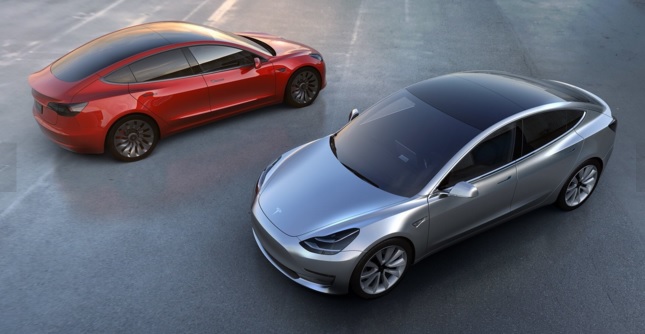 148,704 plug-in vehicles were sold in the U.S. during the first half of 2019, compared to 124,256 for first half of 2019. That makes for an increase of 19.67 percent over that same period last year of plug-in hybrid and battery electric vehicles. Through May, there were 840,814 in global plug-in vehicle sales, versus 591,796 for the first five months of 2018 — an increase of 42 percent over that same period last year.
148,704 plug-in vehicles were sold in the U.S. during the first half of 2019, compared to 124,256 for first half of 2019. That makes for an increase of 19.67 percent over that same period last year of plug-in hybrid and battery electric vehicles. Through May, there were 840,814 in global plug-in vehicle sales, versus 591,796 for the first five months of 2018 — an increase of 42 percent over that same period last year.